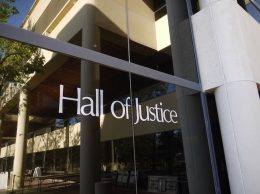Here are five key issues to watch closely this economic forecast season

The economic forecast season is headed into full swing with no clear consensus about the way forward. Meanwhile, the election that’s just around the corner may provide more questions than answers about the future state of business conditions in California.
For small-business owners like me, folks who tend to pay attention to politics and the economy, that’s not an easy way to plan for the future. So, in an effort to cut through the noise to some real issues facing our region, I’ll offer up five of the key indicators that I’ll be watching in the weeks ahead.
• No. 1: Housing and construction. These battered industries are the key to the speed of recovery for the tri-county economy. These are sectors that have been badly beaten down and where even small gains will translate directly into increased demand for labor and supplies.
Resurgent property values also are the key to filling the fiscal potholes facing county and municipal governments. For Oxnard and Santa Maria, the largest cities in Ventura and Santa Barbara counties, respectively, the return of housing and construction will be enormously important.
• No. 2: Proposition 30. By pitting education versus business, Gov. Jerry Brown has created what others have described as a lose-lose situation. But whichever way the voting goes, the fallout will be of critical importance. Schools getting billions of dollars will bolster a beleaguered sector but the cost could be the loss of one or more high-profile headquarters for the region. If Prop. 30 fails, Gov. Brown and the legislature will undoubtedly work to soften the blow on K-12 and higher education; but the budget wrangling will be a major overhang into 2013. Anybody fancy a California IOU?
• No. 3: The immigration issue. Listening to the rhetoric from both political parties, this is the year that the Latino vote has come of age nationally, so I expect immigration reform to come on the table. For our region, meaningful immigration reform could mean a much broader tax base with millions of dollars a year more in school funding — and a reduction in unfunded mandates for health care as well.
Reform that included more visas for science and technology graduates from our universities could spur a new wave of technology companies; don’t forget that immigration reform in the late 1980s triggered a wave of successful Hispanic-owned businesses in the 1990s.
• No. 4: Economic development. It’s come on the agenda in terms of new efforts in both Ventura and San Luis Obispo counties to think more strategically about how to operate a more efficient government and about how to create a better environment for job growth and job retention. This is a permanent part of the regional landscape for the 21st century, even though finding the right formula for the future will be contentious and complex.
• No. 5: The overall trend. Lost in the fog of prognostication is the fact that overall for the Tri-Counties, the trend has been a positive one. Agriculture and tourism have been exceedingly strong; technology hot spots abound and the region has not had a significant bank failure or distressed sale in quite some time. We can debate the pace of the trend (see housing discussion above) but barring a catastrophe of some sort, odds are things will be better a year from now than they are today.
For extra credit, I’d add a whimsical note about the power of regulators and regulation. Gov. Jerry Brown got a taste of what small moves in regulation can mean for businesses when he temporarily relieved rules for gasoline formulation and we saw prices plunge overnight.
Can a more streamlined regulatory regime lift California’s economy without damaging the environment? Absolutely.
Will we learn any lessons from the gasoline crunch? That remains to be seen.
• Contact Editor Henry Dubroff at [email protected].











